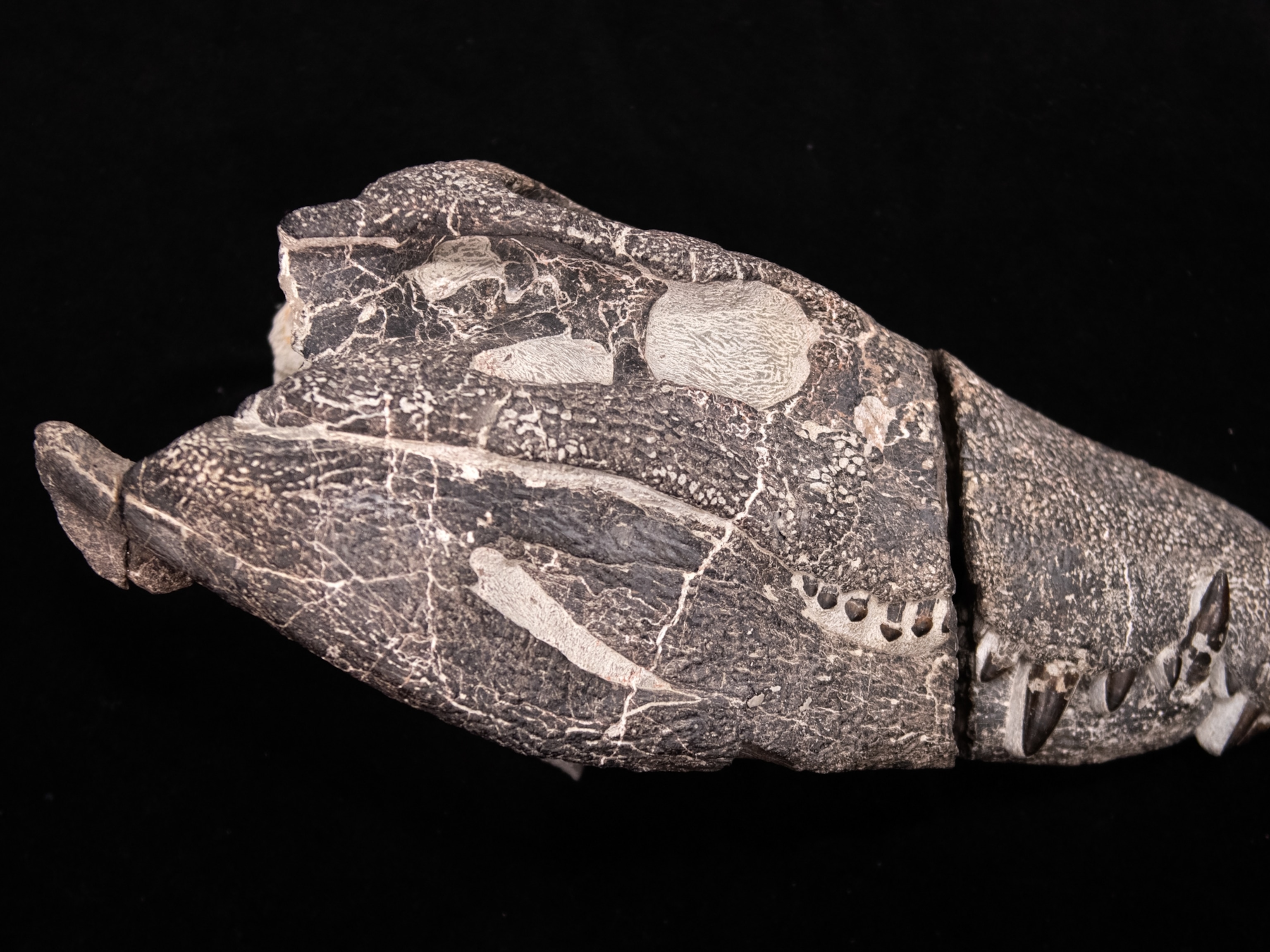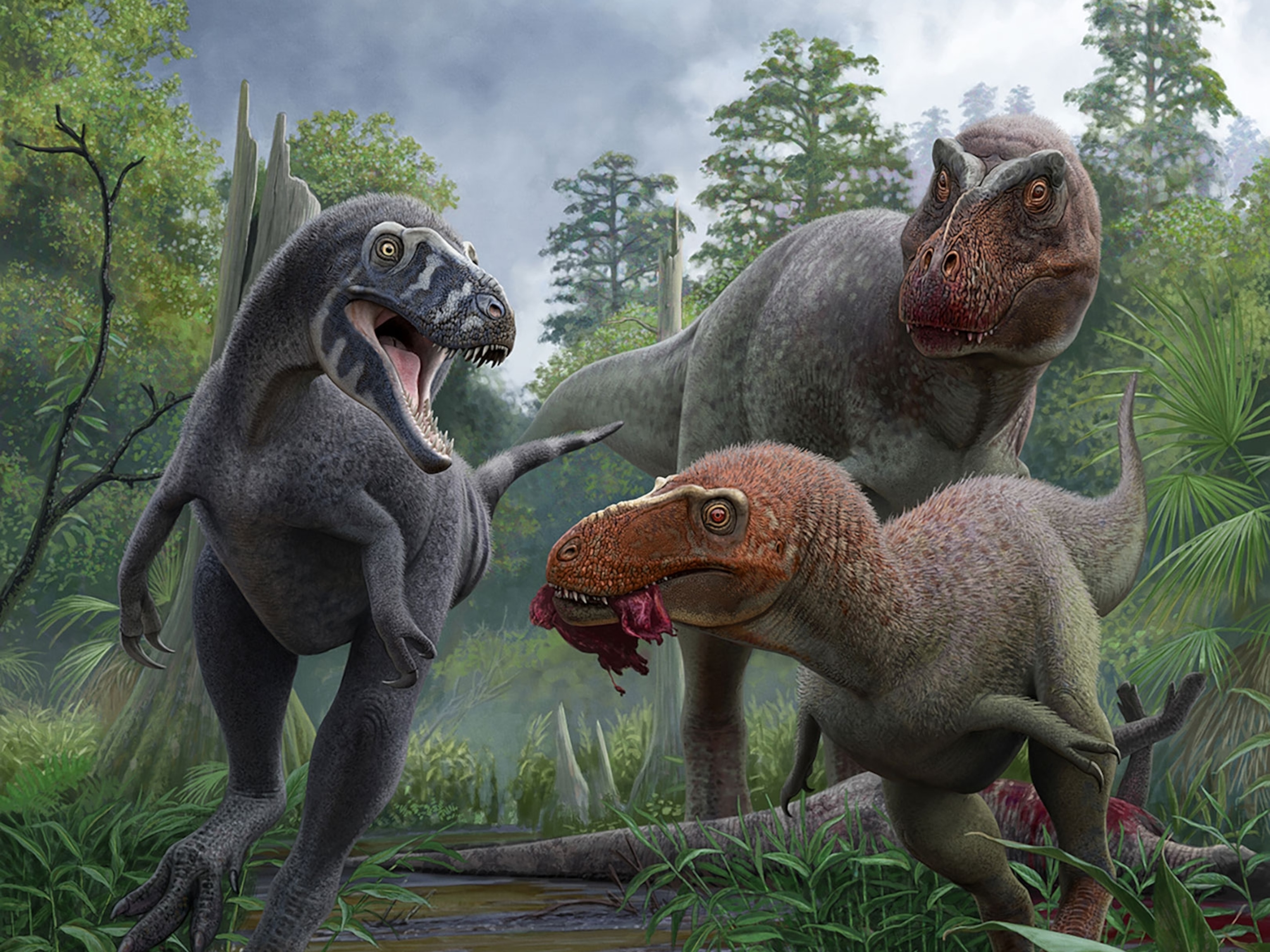
Which Animal Has the Longest Claws of All Time?
Cretaceous-era dinosaurs sported some terrifying weapons—but it's still tough to beat the giant armadillo.
How would you like to have been able to tear open a Christmas gift with these?
The possibly 3.2-foot (1-meter) long claws of Therizinosaurus, which hung down like the alarming mitts of Edward Scissorhands, are said to be the longest claws of all time.
Nicknamed the “scythe lizard,” this dinosaur lived during the later part of the Cretaceous period, about 70-75 millon years ago, in what’s now Central Asia.
Though its claws might seem perfect for ripping flesh, Therizinosaurus was likely a herbivore that used its hands for defense and grabbing vegetation, Mark Witton, paleobiology researcher at the U.K.'s University of Portsmouth, says by email. (Also see "New Raptor Dinosaur Used Giant Claw to Pin, Slash Prey?")
But the ancient creature is still a bit of a mystery—and one we looked into thanks to Jim Adams, who asked Saturday’s Weird Animal Question of the Week.
As a follow-up to our column about the longest claw-to-body ratio on animals alive today, Adams wondered: “How does the present compare to long-clawed animals of the past?”
As far as claws go, Therizinosaurus is king: "I can't think of anything with longer claws,” Witton says.
But you can’t measure claw-to-body ratio—which scientists use to estimate the relevance of claws—without a body.
No Body Home
"The big problem with Therizinosaurus is that we do not really have a legitimate skeleton on which to base the claw-to-body length ratio,” Phillip Currie, dinosaur paleobiologist at the University of Alberta, Canada, says via email.
“An illegally collected skeleton suggests Therizinosaurus was no longer than Tarbosaurus," another large but distantly related type of two-legged dinosaur called a theropod.
Tarbosaurus, which various estimates put at between 33 feet (10 meters) and 39 feet (12 meters) long, is a helpful comparison because the two animals have the same femur size and lived in the same area, Currie says.
Though scentists have reported varying claw sizes forTherizinosaurus—a 2014 study in Proceedings of the Royal Society B estimated Therizinosaurus claws at over 1.6 feet (0.5 meter)—the claw-to-body ratios still end up in the same ballpark.
For instance, if Therizinosaurus was Tarbosaurus size with 3.2 foot (1-meter) claws, that would point to between an 8.2 percent to 10 percent claw-to-body ratio. (See "Mystery Dinosaur Finally Gets a Body.")
At those estimates, the longest clawed animal currently alive, the giant armadillo, would outclaw the Cretaceous Freddy Krueger—at least ratio-wise. (Read about a newfound dinosaur called "Lightning Claw.")
With a body length of 3 feet (0.9 meter) and claw length of 8 inches (20 centimeters), the armadillo has a whopping 22 percent claw-to-body ratio.
Modern Family
Another ancient animal with noteworthy claws is the giant ground sloth, which “used theirs for manipulating large vegetation and digging,” Witton says.
A 12,000-year-old Jefferson’s ground sloth fossil found in North Dakota had a body length of about to 6.5 to 9.8 feet (2 to 3 meters) and a claw length of 6.5 inches (16.5 centimeters). That would mean it had a claw-to-body ratio of between 5.6 to 8 percent.
Modern three-toed and two-toed sloths have about a 17 percent and 14 percent ratio, respectively.
Given these ratio estimates, the modern animals would be ahead by a long shot. Or a long claw.
Weird Animal Question of the Week answers your questions every Saturday. If you have a question about the weird and wild animal world, tweet me, leave me a note or photo in the comments below, or find me on Facebook.





